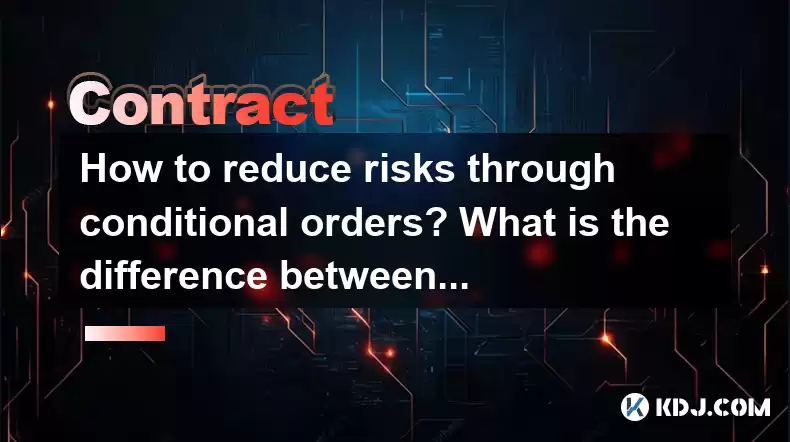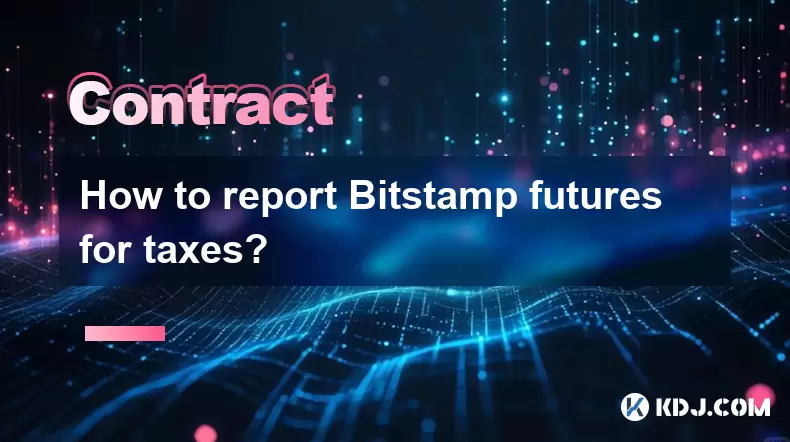-
 Bitcoin
Bitcoin $115000
0.12% -
 Ethereum
Ethereum $3701
4.50% -
 XRP
XRP $3.081
2.99% -
 Tether USDt
Tether USDt $0.0000
-0.01% -
 BNB
BNB $767.9
1.45% -
 Solana
Solana $169.5
3.13% -
 USDC
USDC $0.9999
0.01% -
 Dogecoin
Dogecoin $0.2106
4.30% -
 TRON
TRON $0.3334
1.62% -
 Cardano
Cardano $0.7564
2.54% -
 Stellar
Stellar $0.4165
0.76% -
 Hyperliquid
Hyperliquid $38.75
0.25% -
 Sui
Sui $3.593
3.00% -
 Chainlink
Chainlink $17.08
3.59% -
 Bitcoin Cash
Bitcoin Cash $573.6
4.35% -
 Hedera
Hedera $0.2508
-0.84% -
 Avalanche
Avalanche $23.07
6.46% -
 Ethena USDe
Ethena USDe $1.001
-0.02% -
 Litecoin
Litecoin $120.8
8.17% -
 UNUS SED LEO
UNUS SED LEO $8.943
-0.32% -
 Toncoin
Toncoin $3.400
-5.60% -
 Shiba Inu
Shiba Inu $0.00001255
1.54% -
 Uniswap
Uniswap $9.908
6.32% -
 Polkadot
Polkadot $3.718
2.10% -
 Monero
Monero $303.0
-0.74% -
 Dai
Dai $0.9999
-0.02% -
 Bitget Token
Bitget Token $4.392
0.91% -
 Cronos
Cronos $0.1403
6.31% -
 Pepe
Pepe $0.00001076
1.13% -
 Aave
Aave $267.2
1.80%
How to reduce risks through conditional orders? What is the difference between conditional orders and ordinary limit orders?
Conditional orders in crypto trading automate decisions, protect against market swings, and help manage risks effectively, unlike ordinary limit orders.
Apr 28, 2025 at 06:35 am

In the world of cryptocurrency trading, managing risks is crucial to ensure that your investments are protected. One effective way to mitigate risks is through the use of conditional orders. These orders allow traders to set specific conditions under which their trades will be executed, thereby providing a level of control and automation that can help protect against sudden market fluctuations. In this article, we will explore how conditional orders can be used to reduce risks, and we will also discuss the differences between conditional orders and ordinary limit orders.
What Are Conditional Orders?
Conditional orders are a type of order that allows traders to set specific conditions that must be met before the order is executed. These conditions can be based on price, time, or other market indicators. For example, a trader might set a conditional order to buy a cryptocurrency if its price falls below a certain level, or to sell if the price rises above a certain threshold. This type of order can be particularly useful in volatile markets, where prices can change rapidly.
How Conditional Orders Reduce Risks
Using conditional orders can significantly reduce the risks associated with cryptocurrency trading. Here’s how:
Automated Trading Decisions: By setting specific conditions for your trades, you can automate your trading decisions. This means that you don’t have to constantly monitor the market, reducing the risk of missing out on opportunities or making impulsive decisions based on short-term market movements.
Protection Against Sudden Market Movements: Conditional orders can help protect your investments from sudden market movements. For instance, if you set a stop-loss order, your position will be automatically sold if the price drops to a certain level, thereby limiting your potential losses.
Profit Maximization: Conditional orders can also be used to lock in profits. For example, you can set a take-profit order to sell your cryptocurrency when it reaches a certain price, ensuring that you don’t miss out on potential gains if the market reverses.
Risk Management: By setting multiple conditional orders, you can create a comprehensive risk management strategy. For example, you might set both stop-loss and take-profit orders to ensure that your trades are automatically managed according to your risk tolerance and investment goals.
Setting Up Conditional Orders
Setting up conditional orders involves a few key steps. Here’s a detailed guide on how to do it:
Choose Your Trading Platform: First, you need to choose a trading platform that supports conditional orders. Many popular cryptocurrency exchanges, such as Binance and Coinbase Pro, offer this feature.
Access the Order Form: Once you’ve chosen your platform, navigate to the trading section and find the order form. Look for an option to create a conditional or advanced order.
Select the Type of Conditional Order: There are several types of conditional orders, including stop-loss, take-profit, and trailing stop orders. Choose the type that best fits your trading strategy.
Set the Conditions: Enter the specific conditions for your order. This might include the price at which you want the order to be executed, the time frame within which the order should be active, and any other relevant parameters.
Review and Submit: Before submitting your order, review all the details to ensure that they are correct. Once you’re satisfied, submit the order and monitor its status.
Differences Between Conditional Orders and Ordinary Limit Orders
While both conditional orders and ordinary limit orders allow traders to set specific prices at which they want their trades to be executed, there are some key differences between the two:
Execution Conditions: Conditional orders are executed only when certain predefined conditions are met. These conditions can be based on price, time, or other market indicators. In contrast, ordinary limit orders are executed at a specified price or better, without any additional conditions.
Flexibility: Conditional orders offer more flexibility than ordinary limit orders. With conditional orders, you can set multiple conditions and create complex trading strategies. Ordinary limit orders, on the other hand, are more straightforward and are typically used for simpler trading scenarios.
Risk Management: Conditional orders are particularly useful for risk management. By setting stop-loss and take-profit orders, you can automatically manage your trades to limit losses and lock in profits. Ordinary limit orders do not offer this level of automation and risk management.
Use Cases: Conditional orders are often used in volatile markets where prices can change rapidly. They allow traders to react quickly to market movements without having to constantly monitor the market. Ordinary limit orders are more commonly used in stable markets where traders are looking to buy or sell at a specific price.
Examples of Conditional Orders in Action
To better understand how conditional orders work, let’s look at a few examples:
Stop-Loss Order: Suppose you buy Bitcoin at $50,000 and want to limit your potential losses. You can set a stop-loss order at $45,000. If the price of Bitcoin falls to $45,000, your stop-loss order will be triggered, and your position will be automatically sold, limiting your loss to $5,000.
Take-Profit Order: Imagine you buy Ethereum at $3,000 and want to lock in profits if the price reaches $3,500. You can set a take-profit order at $3,500. If the price of Ethereum reaches $3,500, your take-profit order will be executed, and you will sell your Ethereum at the desired price, securing your profit.
Trailing Stop Order: Let’s say you buy Litecoin at $150 and want to protect your gains while allowing for potential further increases. You can set a trailing stop order with a 10% trail. If the price of Litecoin rises to $165, your trailing stop will move to $148.50 (10% below the current price). If the price then falls to $148.50, your order will be executed, locking in a profit of $33.50 per Litecoin.
Frequently Asked Questions
Q: Can conditional orders be used on all cryptocurrency exchanges?
A: Not all cryptocurrency exchanges support conditional orders. It’s important to check with your chosen exchange to see if they offer this feature. Popular exchanges like Binance and Coinbase Pro do support conditional orders, but smaller or less established platforms may not.
Q: Are there any fees associated with using conditional orders?
A: Some exchanges may charge additional fees for using conditional orders, especially if they are considered advanced or complex orders. It’s important to review the fee structure of your exchange to understand any potential costs.
Q: How can I monitor my conditional orders once they are set?
A: Most trading platforms provide a dashboard or order management section where you can view the status of your conditional orders. You can typically see whether your orders are active, pending, or executed, and you can also cancel or modify them if needed.
Q: Can I set multiple conditional orders for the same position?
A: Yes, you can set multiple conditional orders for the same position. For example, you might set both a stop-loss and a take-profit order to manage your risk and potential profits simultaneously. Just ensure that the conditions of your orders do not conflict with each other.
Disclaimer:info@kdj.com
The information provided is not trading advice. kdj.com does not assume any responsibility for any investments made based on the information provided in this article. Cryptocurrencies are highly volatile and it is highly recommended that you invest with caution after thorough research!
If you believe that the content used on this website infringes your copyright, please contact us immediately (info@kdj.com) and we will delete it promptly.
- Cryptocurrency, Altcoins, and Profit Potential: Navigating the Wild West
- 2025-08-04 14:50:11
- Blue Gold & Crypto: Investing Disruption in Precious Metals
- 2025-08-04 14:30:11
- Japan, Metaplanet, and Bitcoin Acquisition: A New Era of Corporate Treasury?
- 2025-08-04 14:30:11
- Coinbase's Buy Rating & Bitcoin's Bold Future: A Canaccord Genuity Perspective
- 2025-08-04 14:50:11
- Coinbase's Buy Rating Maintained by Rosenblatt Securities: A Deep Dive
- 2025-08-04 14:55:11
- Cryptos, Strategic Choices, High Returns: Navigating the Meme Coin Mania
- 2025-08-04 14:55:11
Related knowledge

Why is my Bitstamp futures position being liquidated?
Jul 23,2025 at 11:08am
Understanding Futures Liquidation on BitstampFutures trading on Bitstamp involves borrowing funds to open leveraged positions, which amplifies both po...

How to report Bitstamp futures for taxes?
Jul 30,2025 at 08:35am
Understanding Bitstamp Futures and Taxable EventsWhen trading Bitstamp futures, it’s essential to recognize that these financial instruments are treat...

Does Bitstamp offer inverse contracts?
Jul 23,2025 at 01:28pm
Understanding Inverse Contracts in Cryptocurrency TradingIn the realm of cryptocurrency derivatives, inverse contracts are a specific type of futures ...

What is the difference between futures and perpetuals on Bitstamp?
Jul 27,2025 at 05:08am
Understanding Futures Contracts on BitstampFutures contracts on Bitstamp are financial derivatives that allow traders to speculate on the future price...

How to find your Bitstamp futures trade history?
Jul 23,2025 at 08:07am
Understanding Bitstamp and Futures Trading AvailabilityAs of the current state of Bitstamp’s service offerings, it is critical to clarify that Bitstam...

Can I use a trailing stop on Bitstamp futures?
Jul 23,2025 at 01:42pm
Understanding Trailing Stops in Cryptocurrency TradingA trailing stop is a dynamic type of stop-loss order that adjusts automatically as the price of ...

Why is my Bitstamp futures position being liquidated?
Jul 23,2025 at 11:08am
Understanding Futures Liquidation on BitstampFutures trading on Bitstamp involves borrowing funds to open leveraged positions, which amplifies both po...

How to report Bitstamp futures for taxes?
Jul 30,2025 at 08:35am
Understanding Bitstamp Futures and Taxable EventsWhen trading Bitstamp futures, it’s essential to recognize that these financial instruments are treat...

Does Bitstamp offer inverse contracts?
Jul 23,2025 at 01:28pm
Understanding Inverse Contracts in Cryptocurrency TradingIn the realm of cryptocurrency derivatives, inverse contracts are a specific type of futures ...

What is the difference between futures and perpetuals on Bitstamp?
Jul 27,2025 at 05:08am
Understanding Futures Contracts on BitstampFutures contracts on Bitstamp are financial derivatives that allow traders to speculate on the future price...

How to find your Bitstamp futures trade history?
Jul 23,2025 at 08:07am
Understanding Bitstamp and Futures Trading AvailabilityAs of the current state of Bitstamp’s service offerings, it is critical to clarify that Bitstam...

Can I use a trailing stop on Bitstamp futures?
Jul 23,2025 at 01:42pm
Understanding Trailing Stops in Cryptocurrency TradingA trailing stop is a dynamic type of stop-loss order that adjusts automatically as the price of ...
See all articles

























































































